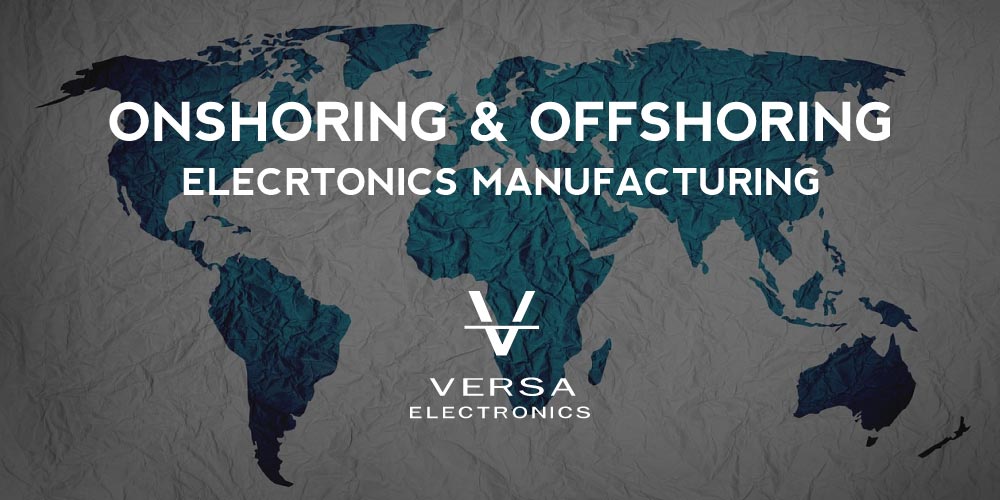With an increasingly globalized world, the business landscape has evolved significantly over the past decades, with companies constantly seeking ways to optimize their operations, increase profits, and fulfill consumer demand in real-time. Onshoring and offshoring, often associated with the electronics manufacturing industry, are business strategies designed to optimize labor costs, raw materials, and operational efficiencies.
Contents:
- Understanding Onshoring
- Benefits of Onshoring
- Understanding Offshoring
- Benefits of Offshoring
- Covid-19 Pandemic and Its Impact
- Comparing Onshoring and Offshoring
Understanding Onshoring
Onshoring is a business process that involves relocating a company’s business operations from overseas back to the home country. It is often referred to as “bringing jobs back home,” and in the context of the United States and North America, it means returning manufacturing operations from overseas locations closer to home.
Benefits of Onshoring
Onshoring offers several key advantages. A significant benefit of onshoring in electronics manufacturing is proximity to the consumer market, enabling companies to respond more effectively to consumer demand. This closeness allows for quicker adjustments to product design or features based on real-time feedback, reducing time to market.
Furthermore, onshoring reduces the complexities and risks associated with managing a global supply chain, such as supply chain disruptions, shipping delays, and increased transportation costs. There’s also a reduced time zone difference which allows for better coordination between different units of the business.
Another benefit of onshoring is the potential for cost saving due to reduced shipping and transportation costs, as well as potential tax incentives offered by the home country for bringing jobs back. Moreover, with an increasingly aware consumer base, products made locally may have a marketing advantage as they can be promoted as supporting local economies and jobs.
Understanding Offshoring
In contrast to onshoring, offshoring involves relocating business operations, often manufacturing processes, to a different country where labor and raw materials may be cheaper. This outsourcing business model has been a common practice in electronics manufacturing for several decades.
Benefits of Offshoring
Offshoring’s main appeal lies in the potential for significant cost reductions, primarily due to lower labor costs in the offshore locations. It’s common for electronic manufacturing companies to offshore to countries in Asia, where the workforce’s wages can be lower than those in North America.
Moreover, the access to abundant and potentially cheaper raw materials in the offshore location can also contribute to cost savings. Besides cost, offshoring can also help companies enter new markets and cater to local consumer demand more effectively.
Covid-19 Pandemic and Its Impact
The COVID-19 pandemic has brought a new focus to the onshoring and offshoring discussion. As the pandemic disrupted global supply chains, companies faced significant challenges in managing their operations overseas. This situation highlighted the vulnerabilities in the global supply chain model and encouraged many companies to consider onshoring to mitigate risk.
Comparing Onshoring and Offshoring
While both onshoring and offshoring can offer significant benefits, the choice between them largely depends on the specific needs of the company and the industry in which it operates. Offshoring can offer cost advantages due to cheaper labor and raw materials. However, it can expose companies to supply chain disruptions, increased shipping times, and potentially negative consumer perceptions.
Onshoring, on the other hand, brings operations closer to home, enabling faster response to market changes and potentially reducing supply chain vulnerabilities. Despite potentially higher labor costs, onshoring can lead to overall cost savings when considering transportation, customs duties, and the mitigation of supply chain risks. It also fosters a positive brand image as companies supporting local economies and jobs are often viewed favorably by consumers.
Conclusion
Onshoring and offshoring are strategic choices made by electronics manufacturers based on a multitude of factors, including cost, proximity to consumer markets, supply chain complexity, and potential risk mitigation. The COVID-19 pandemic has placed renewed emphasis on these decisions, as businesses worldwide reassess their operational strategies.
As we move forward in a post-pandemic world, these strategies will continue to shape the landscape of the electronics manufacturing industry. Companies will need to balance their need for cost-saving efficiencies against other factors such as consumer demand, supply chain stability, and their commitment to supporting local economies.
Ultimately, the choice between onshoring and offshoring isn’t a binary one but rather a strategic decision made in the context of a business’s unique needs and the ever-changing global marketplace. With the rising trends of nearshoring (relocating business operations to a nearby country) and bestshoring (choosing the best location for each part of the business operation), it is clear that companies are getting more flexible and innovative in their location strategies to stay competitive in the global marketplace.
References
- Deloitte. (2021). 2021 Global Manufacturing Outlook. Deloitte Insights.
- McKinsey & Company. (2020). Risk, resilience, and rebalancing in global value chains. McKinsey Global Institute.
- KPMG. (2022). The move towards outsourcing and offshoring – the challenges and opportunities. KPMG International.
- EY. (2023). How COVID-19 impacted supply chains and what comes next. EY Global.





